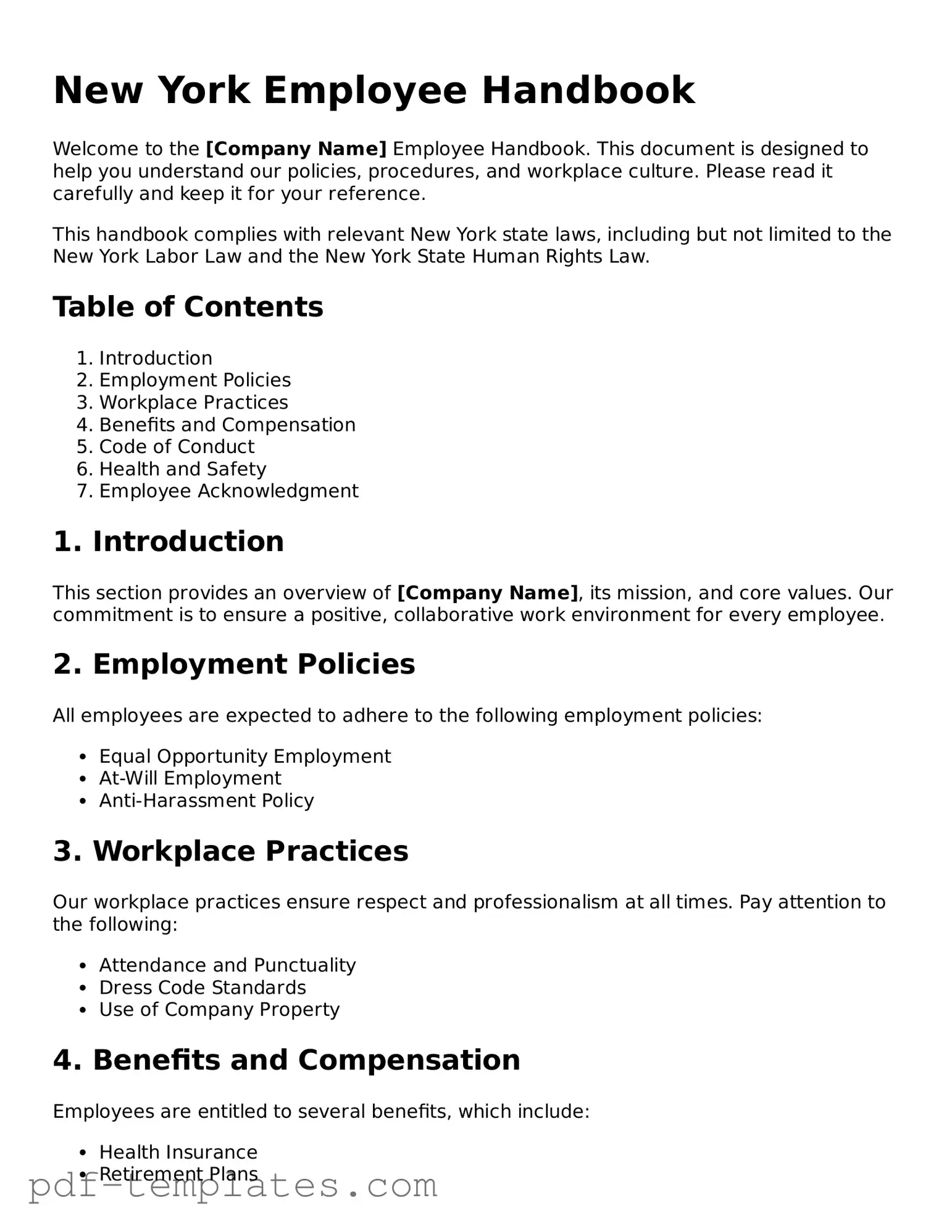The New York Employee Handbook is similar to the Employee Manual. Both documents serve as a guide for employees regarding company policies, procedures, and expectations. They outline workplace rules, employee rights, and responsibilities. The Employee Manual is typically more detailed and may include specific sections on disciplinary actions, benefits, and workplace conduct.
Another document that resembles the New York Employee Handbook is the Company Policy Document. This document provides a comprehensive overview of the company's policies on various topics, such as attendance, dress code, and anti-discrimination measures. While the Employee Handbook may summarize these policies, the Company Policy Document often goes into greater detail, making it a useful reference for employees seeking clarification on specific policies.
The Orientation Packet is also similar to the Employee Handbook. This packet is usually provided to new hires and contains essential information about the company, including its mission, values, and culture. While the Employee Handbook may serve as a long-term reference, the Orientation Packet is designed to help new employees acclimate quickly to their roles and the workplace environment.
The Code of Conduct document shares similarities with the New York Employee Handbook as well. This document specifically addresses the expected behavior of employees in the workplace. It often includes guidelines on ethical behavior, conflict resolution, and interactions with colleagues and clients. The Employee Handbook may incorporate these guidelines but typically provides a broader overview of company policies.
The Job Description document is another related document. While it primarily focuses on the specific duties and responsibilities of individual positions, it complements the Employee Handbook by outlining what is expected of employees in their roles. Job Descriptions often include qualifications, skills, and performance expectations, which can be referenced alongside the broader policies in the Employee Handbook.
The Benefits Summary is similar to the New York Employee Handbook in that it provides information about employee benefits. This document details health insurance, retirement plans, and other perks offered by the company. Employees can refer to both documents to understand their rights and the benefits available to them as part of their employment.
The Safety Manual is another document that aligns with the Employee Handbook. It focuses specifically on workplace safety policies and procedures. This manual outlines emergency procedures, safety protocols, and reporting mechanisms for workplace hazards. While the Employee Handbook may touch on safety, the Safety Manual provides in-depth information critical for maintaining a safe work environment.
The Performance Review Guidelines document is similar to the Employee Handbook in that it outlines the performance evaluation process. This document details how employee performance will be assessed, including criteria and frequency of evaluations. The Employee Handbook may reference these guidelines, helping employees understand how their performance will be monitored and evaluated over time.
The Texas Vehicle Purchase Agreement is an important legal document that outlines the responsibilities of both buyers and sellers in a vehicle transaction, ensuring clarity and protection for both parties involved. To better understand the process of purchasing a vehicle, one can refer to the template available at https://documentonline.org/blank-texas-vehicle-purchase-agreement, which provides a comprehensive framework for the agreement, detailing critical elements like sale price, vehicle information, and applicable warranties.
The Leave of Absence Policy is also comparable to the New York Employee Handbook. This document outlines the procedures for requesting various types of leave, such as medical leave, family leave, or personal leave. It provides specific details on eligibility, documentation required, and the process for applying for leave, which may also be summarized in the Employee Handbook.
Lastly, the Employee Grievance Procedure document is similar to the Employee Handbook. This document explains the steps employees should take if they have a complaint or concern. It typically outlines the process for reporting grievances, the timeline for resolution, and the parties involved. The Employee Handbook may provide a general overview of grievance procedures, while this document offers a more detailed approach to addressing workplace issues.
